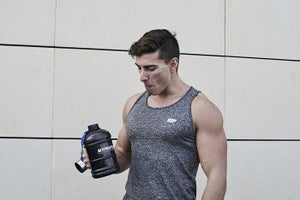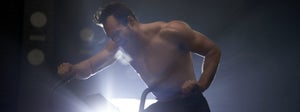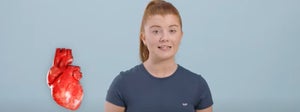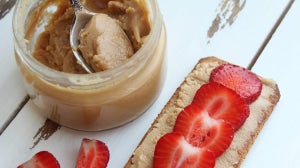
From the writer Myprotein Domenico Grullo , student in Medicine and Surgery.
Shoulder Press
The Shoulder Press is an exercise in weight training, where the load is pushed directly upwards. It is often referred to as the Slow Forward , Military Press or Overhead Press and various tools such as barbell, dumbbell, kettlebell, medicine ball or sandbag can be used. To analyze the correct execution of the gesture we will refer to the sitting variant with the use of the barbell, the classic slow forward.
Correct execution
The start sees the barbell resting on the collarbones, with the grip slightly wider than the shoulders and with the elbows looking down.
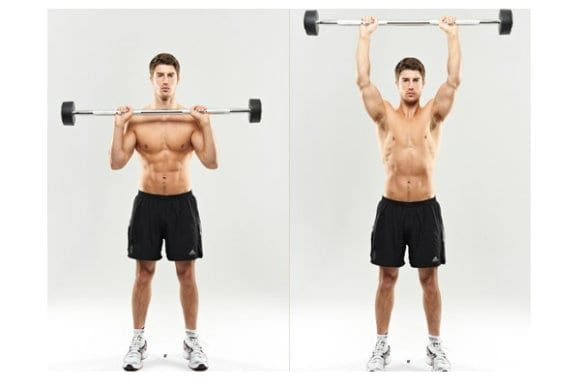
At this point the barbell is lifted upwards, bringing it over the head and fully extending the elbows . This is the complete movement of the exercise, i.e. the maximum ROM (range of motion), muscular excursion that can be performed.
Muscles Involved
During the exercise , many muscles are stimulated : the deltoids, activated along the entire range of motion, Trapezius, Scapula elevators and Rhomboids, whose work touches the apex between 135 ° and 180 ° in abduction of the humerus and the triceps muscles brachialis (elbow distension) and clavicular bundles of the pectoralis major.
From this fixed point, depending on the type of training we are carrying out, the joint excursion we want to obtain, from the grip on the tool and from the tool itself, we can try our hand at a myriad of variations .
In Bodybuilding, where hypertrophy is aimed mainly at the deltoids , the movement can have a reduced range, not reaching the lock-out position (elbows extended and locked above the head) but stopping before the massive intervention of the scapulae elevators, therefore approximately at 135 °, that is, with the elbow at eye-forehead level.
The loads used are important, especially with the barbell. The use of dumbbells substantially involves a greater work of the stabilizers and a movement that instead of being performed on the sagittal plane (in front of the face) is carried out on the frontal plane (on the sides of the head). The muscles involved are always the same, but there is an emphasis on the anterior head of the deltoid . It can be done on a slightly inclined bench or standing (Military style).
Electromyographic studies (which detect activation and involvement of the muscle heads) have produced a series of data regarding the muscular engagement of the various heads of the deltoid depending on the use of the barbell or dumbbells or in the sitting / standing variant: the lateral head is always the one more involved and exerting greater strength and power, the front head is better recruited in the dumbbell variant , both sitting and standing, while the back head, which mostly performs a stabilizing action, is mostly recruited in the standing variants with both dumbbells and barbell. To underline what has been said, the maximum power developed is found in the standing execution with the barbell.
Variants
To these classic exercises seen, the Arnold-style push exercise, is often incorporated by personal trainers in gyms, which involves a diagonal movement: it starts sitting with the dumbbells at shoulder height and with the forearm supinated (palms facing the face) and in a single movement you come in with the weight above your head in the shoulder position, thus practically rotating the limb.
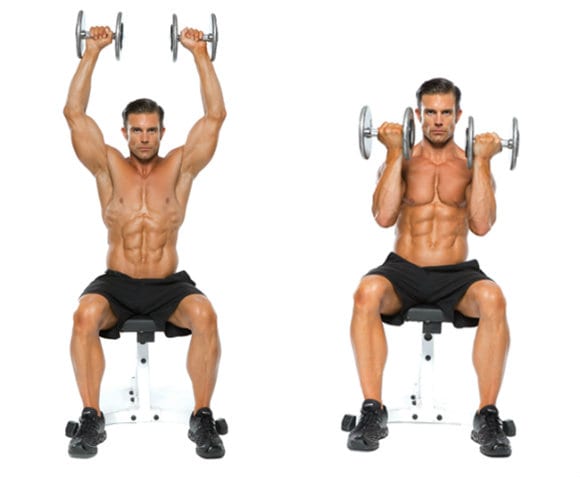
#1 Push press
It is a variant of the classic shoulder, where in the positive phase of the movement the thrust of the lower limbs is accompanied by that of the shoulders . The starting point is always with the barbell on the collarbones and the weight is brought up by aligning the wrists, shoulders, pelvis and ankles (i.e. without letting the bar come out of the center of gravity).
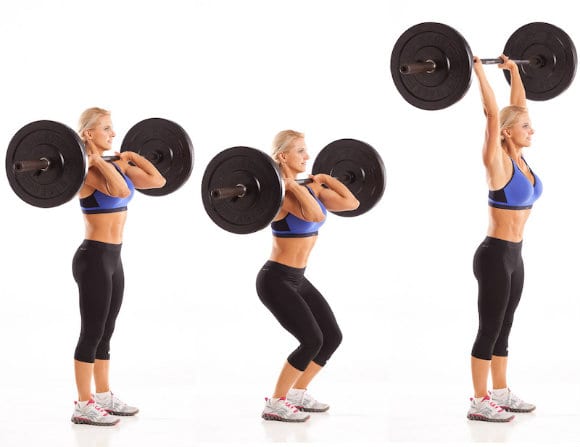
E' usato soprattutto nello sviluppo di potenza e per migliorare il condizionamento generale. L'esercizio costituisce parte del più elaborato clean and press oppure del thruster, che prevedono un accovacciamento e spinta esplosiva verso l'alto (dopo analizzati nel dettaglio).
#2 Clean and Press
Un movimento del sollevamento pesi in cui ad una prima parte, composta da una girata al petto, si porta il bilanciere da questo punto fin sopra la testa, nella posizione di lock out, con il solo intervento degli arti superiori e senza spinta da parte di quelli inferiori.
Nelle discipline olimpioniche ormai non si utilizza più ma essendo un movimento composto è davvero ottimo per sviluppare forza e potenza impegnando in un unico esercizio tutto il corpo.
#3 Thruster
Anche questo è un ibrido tra 2 esercizi prestazionali: front squat e push press; da molti viene considerato una sorta di estremizzazione del push press, in quanto è preponderante la spinta data da bacino e arto inferiore. Può essere eseguito con attrezzi differenti (bilanciere, manubri o kettlebell); il punto di partenza prevede la posizione classica del push press, con gli avambracci perpendicolari al pavimento e con i piedi alla larghezza delle spalle.
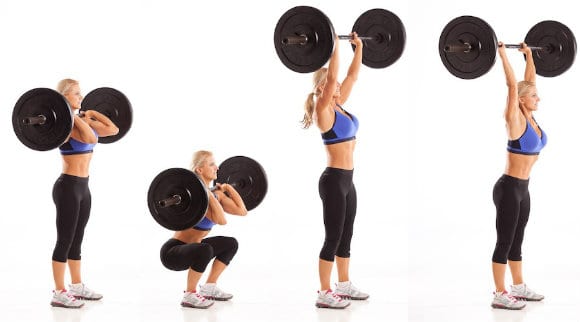
Da qui si esegue un'accosciata fino al parallelo o poco oltre (mantenendo il petto in avanti e preservando la fisiologica curva lombare) e con un unico movimento si porta l'attrezzo sopra la testa, accompagnando la spinta delle cosce (come quando si sale da un front squat) a quella delle braccia. Con cautela si riporta il peso sulle clavicole e si ricomincia l'esercizio.
In Conclusione
L'accortezza nell'esecuzione deve essere sempre massima in quanto alzare il peso sopra la testa comporta attenta stabilizzazione della schiena, soprattutto nella variante in piedi con manubri. Gli stress maggiori sono dovuti ad eccessiva estensione dell'arco lombare.
Da notare che nelle varianti non è stata inserita la Shoulder press dietro al collo; per mia esperienza personale l'esercizio provoca un grosso ed inutile stress alla capsula articolare, movimento quasi innaturale vista la posizione di estrema extrarotazione ed estrema abduzione, spostando il movimento su muscoli piccoli con funzione stabilizzatrice, come quelli della cuffia dei rotatori, sottoposti in questo caso a forti carichi; fatta questa premessa io mi sentirei di escluderla da una routine di allenamento preferendo le varianti anteriori (bilanciere) e laterali (con manubri).
Buon Allenamento!Canottiera Myprotein


